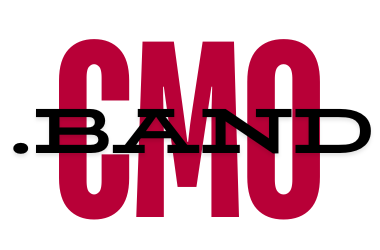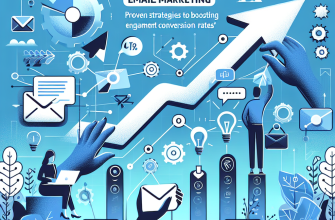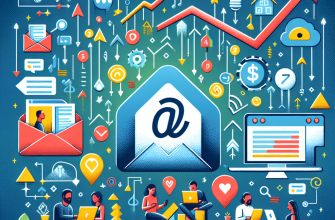- Mastering B2B Email Marketing: Proven Strategies for Building Stronger Business Relationships
- Understanding the Value of B2B Email Marketing
- Strategy 1: Personalization and Segmentation
- Strategy 2: Content That Adds Value
- Strategy 3: Consistency and Timing
- Strategy 4: Utilizing Automation Smartly
- Strategy 5: Feedback and Adaptation
- Strategy 6: Integration with Other Channels
Mastering B2B Email Marketing: Proven Strategies for Building Stronger Business Relationships
In the digital age, where new marketing platforms and technologies emerge at a dizzying pace, email marketing remains a cornerstone of effective B2B communication. Despite the proliferation of social media and other innovative marketing channels, email marketing holds a unique position due to its direct and personal nature. For businesses looking to forge stronger relationships and drive engagement, mastering B2B email marketing is not just beneficial; it’s essential.
Understanding the Value of B2B Email Marketing
B2B email marketing is fundamentally about building and nurturing relationships. Unlike B2C, where the focus might be on quick sales and broad messages, B2B email marketing thrives on fostering a deep understanding and connection with your audience. The goal is to engage other businesses in a way that emphasizes long-term value and trust, rather than immediate transactions.
Strategy 1: Personalization and Segmentation
The first step in a successful B2B email marketing strategy is understanding that not all your contacts are the same. Personalization goes beyond just inserting a recipient’s name in an email. It involves tailoring content based on the recipient’s industry, role in their company, and where they stand in the buyer’s journey. Effective segmentation sorts your audience into distinct groups based on these factors, allowing for more targeted and relevant communication.
For instance, the content you send to a C-level executive might focus on ROI and big-picture impacts, while managerial-level recipients might prefer more detailed content about day-to-day implementation and operational efficiencies.
Strategy 2: Content That Adds Value
Content is the lifeblood of any email marketing campaign. In B2B settings, where the sales cycles are longer and decisions are often made rationally rather than on impulse, the content needs to be especially rich in value. This could be whitepapers, case studies, industry reports, or insightful articles that help your audience solve real problems or make better business decisions.
Remember, every email you send should answer a simple question for your recipient: "What’s in it for me?" If your content doesn’t add value, your emails are likely to end up in the trash.
Strategy 3: Consistency and Timing
Consistency in email marketing fosters familiarity and reliability. It’s important to maintain a regular schedule so that your recipients know when and what to expect from you. However, this doesn’t mean bombarding them with emails. Instead, focus on crafting thoughtful messages sent at strategic times.
Timing can vary based on industry trends, time zones, and even individual recipient habits. Utilizing email analytics can help you determine the best times to send your emails, thereby increasing the chances that they will be opened and read.
Strategy 4: Utilizing Automation Smartly
Email automation has revolutionized how businesses approach email marketing. It allows for timely, relevant, and personalized communication without requiring constant manual effort. For example, setting up a drip campaign can nurture leads over time, providing them with information and solutions based on their previous interactions with your content.
However, it’s crucial to use automation wisely. Over-reliance on automation can make your emails feel impersonal and robotic. Always ensure there’s a human touch in your emails, whether it’s through personalized introductions, custom conclusions, or occasional check-in emails that don’t feel automated.
Strategy 5: Feedback and Adaptation
Effective B2B email marketing is not a set-it-and-forget-it strategy. It requires ongoing adjustments and optimizations based on recipient feedback and engagement metrics. Make it easy for your recipients to provide feedback, whether through direct replies, surveys, or engagement buttons.
Additionally, regularly review your email analytics to understand what’s working and what’s not. Look at metrics like open rates, click-through rates, and conversion rates to gauge the effectiveness of your emails and identify areas for improvement.
Strategy 6: Integration with Other Channels
While email is powerful, it’s most effective when used as part of a broader marketing strategy. Integrating your email marketing efforts with other channels, such as social media, blogging, and digital advertising, can amplify your reach and impact. For instance, sharing snippets of your email content on LinkedIn or directing email subscribers to interactive content on your website can enhance engagement across platforms.
B2B email marketing is more than just a tool for direct sales. It’s a strategic avenue for building and nurturing key business relationships that can yield significant long-term benefits. By focusing on personalization, valuable content, strategic timing, smart automation, continuous feedback, and multi-channel integration, businesses can elevate their B2B email marketing efforts and develop more meaningful connections with their audience.
Remember, at the heart of successful B2B email marketing is a commitment to providing genuine value and relevance to your recipients. With these proven strategies, your business is well-positioned to leverage email marketing for not just better communication, but also for stronger, more profitable business relationships.

A seasoned digital marketing strategist with over 8 years of experience across various areas of digital marketing, including SEO, SMM, PPC, content marketing, and email marketing. Specializes in transforming B2B, B2C, e-commerce, and SaaS businesses by creating effective go-to-market strategies and building thriving digital ecosystems. Known for a data-driven approach to optimizing campaigns and maximizing results.
“If your business is looking to scale or in need of a fresh perspective, feel free to contact”.



